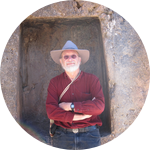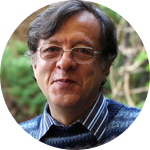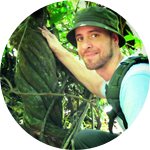About This Project
Certain plant species are fundamental to the identity and longevity of cultural groups. Culturally important medicinal plants that are used for multiple purposes and have gained global attention are expected to be harvested frequently. I will identify medicinal plants that are culturally irreplaceable for local healers in Peru but that are used in medical tourism, and use mathematical models to investigate if and how harvesting these plants for medical tourism can be sustainable.
Ask the Scientists
Join The DiscussionWhat is the context of this research?
Understanding the risk posed by increasing species extinction on the traditional healing practices and longevity of cultural groups is critical for facilitating biocultural adaptation in a context of a changing world. Medicinal plant substitution is one strategy that is widely used by cultural groups to cope with ever changing environments. Ideally, such substitutions must be made without disrupting the efficacy or significance of traditional healing practices. Our understanding of cultural importance and irreplaceability of most medicinal plant species is still limited. Prior research has identified cultural keystone species by using quantitative indices however, it is unclear if these approaches are an adequate measure of species cultural keystone status.
What is the significance of this project?
Non-timber forest products (NTFPs) are plant and animal species that are often fundamental to the livelihoods and rural economies of cultural groups worldwide. Despite the local importance of NTFPs to rural communities, an increased global interest in these economically important plant species may result in greater rates of harvest and potentially lead to a decline in plant populations. Further, reduced yields from NTFP harvested populations may indicate a population decline and therefore warrant conservation. In this study, I am combining ethnoecological and demographic approaches to assess the impact of harvest of Banisteriopsis caapi (Malpighiaceae) bark and stems by local healers around the city of Iquitos, Peru and the Peruvian Amazon Region.
What are the goals of the project?
I will test if current qualitative / quantitative approaches used to measure cultural keystone species status are robust. I will identify medicinal plant species that are most under use pressure as a result of their cultural keystone status and measure if current rates of harvest are sustainable. To do so, I will conduct interviews with 60 healers in the Peruvian Amazon, conduct market studies, and use plant population dynamics to assess harvest sustainability.
I will work with UNAP / local healers to provide data for conservation organizations to aid in sustainable management of medicinal plants. I will work with local healers / NGO's to develop appropriate methods to present the results to local communities.
Budget
Support from a local field assistant and field guide are critical for many projects to be well informed. I aim to hire one local field assistant and field guide from the Peruvian Amazon (near and around Iquitos Peru) to work with me in identifying culturally irreplaceable medicinal plant species that are likely to experience high harvest pressure as a result of their cultural importance and globalization. ($25/day for 80 days). Additionally, funds are needed for some equipment and transportation costs mainly for plant monitoring, identification/collection of plants, and interviews with local expert healers. I have funding for airfare, partial lodging and equipment costs as I am a recipient of the Richard Evans Schultes Award.
Endorsed by
Meet the Team
Affiliates
Michael Coe
The field of ethnobotany has offered unique opportunities for me to synthesize the study of two of my greatest passions— culture and the use of plants that are intrinsic to the identity of that culture. As a PhD candidate / ethnobotanist, I am committed to helping advance our scientific knowledge of the value and irreplaceability of these important plant species.
Previous Research I conducted in the Peruvian Amazon suggested that certain species of plants are of high cultural value to local healers and therefore irreplaceable. I also became aware of a growing interest in the ethnomedical traditions practiced by local healers and the rise in a global phenomenon associated with ayahuasca tourism. There is no doubt that the influx of tourists that travel to the Amazon each year in search of healing plants will lead to increased harvest pressure or over-harvesting of these culturally irreplaceable medicinal plants.
Therefore, I aim to help increase our awareness of the cultural importance of the vast ethnopharmacopeia employed by cultural groups of the Peruvian Amazon, particularly in regards to their ethnomedical practices and traditional botanical knowledge. Further, I aim to help promote sustainable use of many of these plant species that have gained global interest in the context of healing and/or ethnomedicine.
Lab Notes
Nothing posted yet.
Project Backers
- 16Backers
- 12%Funded
- $670Total Donations
- $41.88Average Donation



